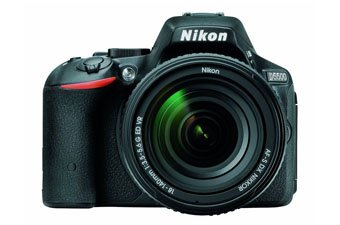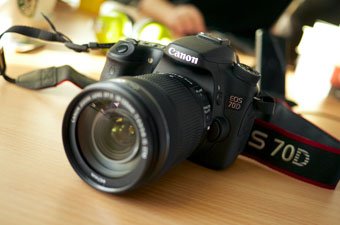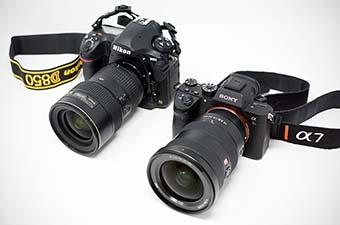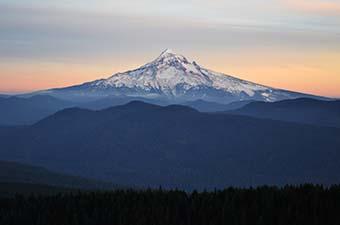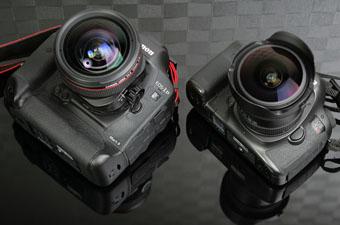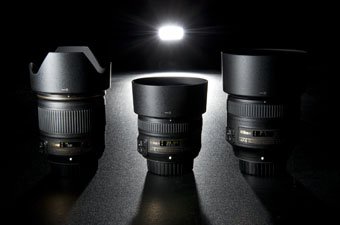The Nikon D5500, one of the leading mid-range DSLRs on the market, uses Secure Digital (SD) format memory cards and the camera has one card slot. The good news for consumers is that memory card speeds have risen steadily over the past few years while prices have fallen. Class 10 cards are now standard and have a minimum write speed of 10 MB per second, which helps to ensure that stills and videos are captured smoothly, and the maximum read speed will determine how quickly they upload to your computer. In terms of storage, we recommend 32GB for the D5500, particularly if you intend to shoot HD video or NEF format (camera RAW) images. 16GB should be fine if don’t take a ton of photos or are willing to upload and save to your computer reasonably often.
Best Memory Card Overall
SanDisk Extreme 32GB ($22)
 Min. Write Speed: 10 MB/s (Class 10)
Min. Write Speed: 10 MB/s (Class 10)
Max. Write Speed: 40 MB/s
Max. Read Speed: 60 MB/s
Best For: Reasonably fast processing and downloading.
The SanDisk Extreme is our pick for the best overall SD memory card. The new version, which actually is cheaper than the older version, offers Class 3 U3 recording speeds for high resolution video and even 4K. You also get write speeds of up to 40 MB per second and read speeds of up to 60 MB per second, which perform far better than cheaper cards with respect to larger files, video, and downloading. In addition, SanDisk Extreme 16-64GB memory cards are rated as waterproof, shockproof, X-ray proof, and can operate in temperatures from -13 to 185 degrees Fahrenheit. That’s a whole lot of features for just over $20. In addition to the 16GB version, the Extreme is offered in 32GB and 64GB versions.
See the SanDisk Extreme
For Professionals
SanDisk Extreme Pro 32GB ($35)
 Min. Write Speed: 10 MB/s (Class 10)
Min. Write Speed: 10 MB/s (Class 10)
Max. Write Speed: 90 MB/s
Max. Read Speed: 95 MB/s
Best For: HD video, faster speeds than the Extreme above.
If you frequently shoot HD video, high-speed bursts, or transfer large volumes of files, the best professional SD memory card for the Nikon D5500 is the SanDisk Extreme Pro. With write speeds of up to 90 MB per second, it’s SanDisk's fastest SD memory card. Like the Extreme series above, the SanDisk Extreme Pro features a durable design that is waterproof, shockproof, X-ray proof, and rated for extreme temperatures. It’s also U3 rated for high resolution video and even 4K (the Nikon 5500 doesn’t shoot in 4K but it will give you the flexibility should you decide to upgrade down the road). For professional speeds and a lower price tag, the Lexar Professional below has a maximum read speed of up to 150 MB/s but doesn’t offer the same levels of durability.
See the SanDisk Extreme Pro
Lexar Professional 1000x 32GB ($23)
 Min. Write Speed: 30 MB/s (Class 10)
Min. Write Speed: 30 MB/s (Class 10)
Max. Write Speed: 95 MB/s
Max. Read Speed: 150 MB/s
Best For: Serious video and burst shooters who don't need weather protection.
Lexar makes top-of-line memory cards geared toward professional photographers, and has been especially successful with its Compact Flash (CF) line. The Lexar Professional SD is superb on paper in terms of speeds: it boasts a 30 MB/s minimum write speed and a best-in-class 150 MB/s maximum read speed. However, unlike the SanDisk cards above, the Lexar Professional 1000x is not weather resistant or rated for extreme temperatures. And some consumers have reported technical issues after minimal periods of use, which you don’t find nearly as often with SanDisk. Purely from a specs and value perspective, the Lexar Professional is the best card for serious photographers that plan to shoot and transfer large volumes of files. But we value the durability and dependability that SanDisk cards offer over the jump in speed.
See the Lexar Professional
On a Budget
Transcend Class 10 16GB ($8)
 Min. Write Speed: 10 MB/s (Class 10)
Min. Write Speed: 10 MB/s (Class 10)
Max. Write Speed: 45 MB/s
Max. Read Speed: 90 MB/s
Best For: Stills and videos on a budget.
The Transcend Class 10 series are some of the best selling budget SD memory cards. You get a minimum write speed of 10 MB per second, more than double the speed of the old SanDisk Standard Class 4. More, the price is a tad cheaper, a clear sign that Class 4 cards are on the way out. If you’re on the fence between this card and the SanDisk Extreme above, the Transcend is a few bucks cheaper but doesn’t offer the same speed or protection from the elements. If neither of those features is important to you, grab this card for under $10. For our money, we would recommend spending up for more speed, more storage, and peace of mind.
See the Transcend Class 10
What Size Memory Card Should I Get?
A few years ago when SD memory cards were more expensive, we used to recommend 16GB cards for still photographers and 32 or 64GB cards for video and camera RAW shooters. However, these cards have dropped so much in price that you can get a 32GB SanDisk Extreme for just over $20. The larger the card the better the value, and we now recommend that just about everyone buy a 32GB card. This way you can shoot photos and videos freely without having to worry about taking the time to delete or rush to a computer to upload and save.
A 32 GB memory card can hold approximately 2,000 photos in JPEG fine large format or 4,000 photos in JPEG fine normal format. NEF (camera RAW) files take up considerably more memory—roughly five to ten times as much—so those who shoot video or in RAW should consider a 64 GB, 128GB card, or multiple cards. For those on a budget, 16GB should still be fine, although slightly less convenient and the Nikon D5500 only has one slot.
What About Lenses?
In addition to memory cards, you can see our guide to the best lenses for the Nikon D5500 for information on all the options from kit lenses to wide-angle and telephoto zoom.

